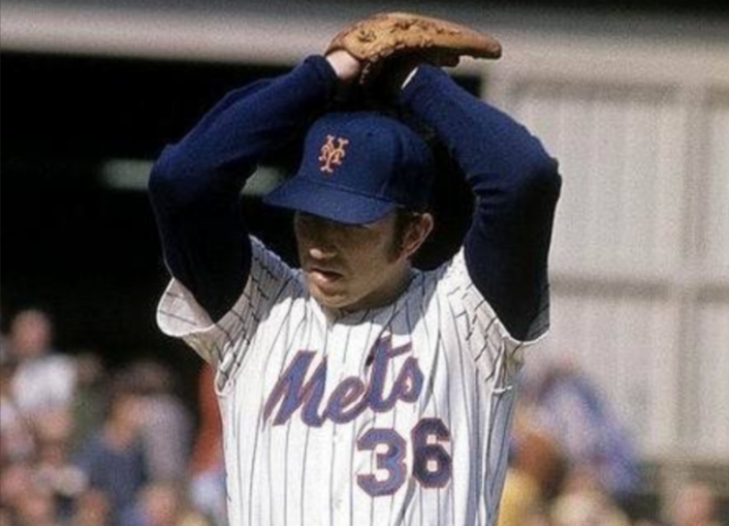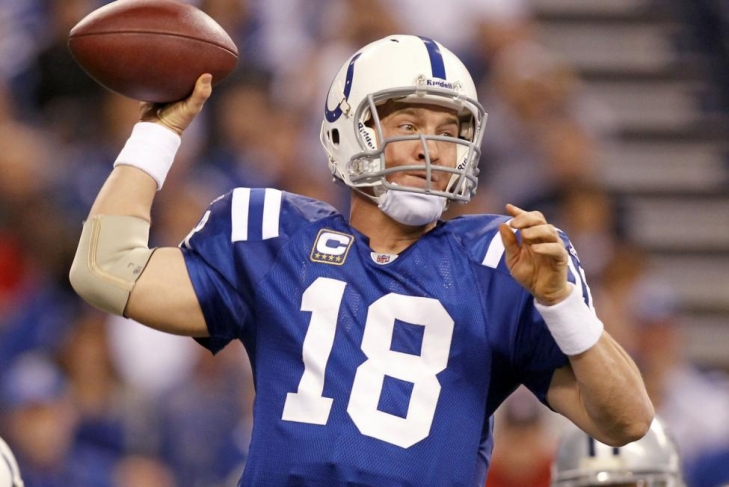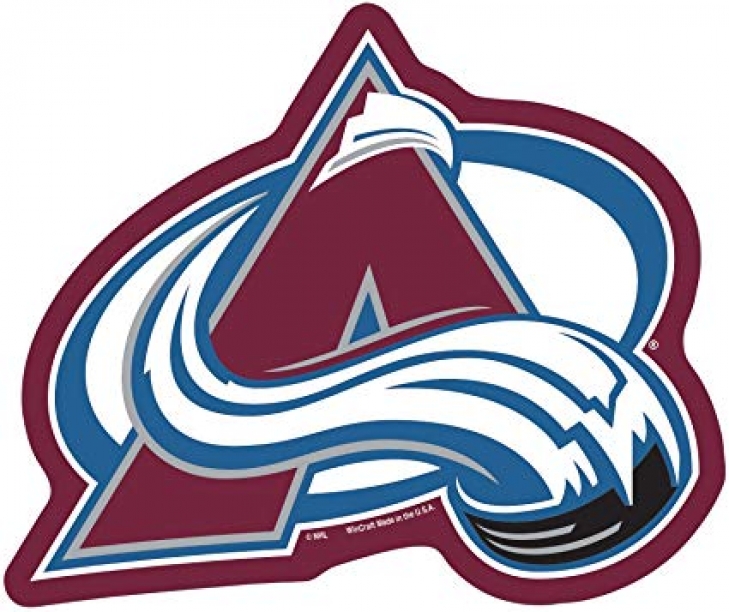
Committee Chairman
The New York Mets announce they will retire the number 36 of Jerry Koosman
Regular visitors of Notinhalloffame.com know that we are slowly working on the top 50 of every major team in the NHL, NBA, NFL and MLB. Once that is done, we intend to look at how each team honor their past players, coaches and executives. As such, it is news to us that the New York Mets will be retiring the #36 of Jerry Koosman this season.
Koosman made his major league debut with the Mets in 1967, and in the following season, he was an All-Star with a 19-12 record and a 2.08 ERA. He followed that with a 17-9 campaign with a 2.28 ERA, and a second straight trip to the All-Star Game, but this was 1969, and a very special season. This year, along with fellow Pitchers, Tom Seaver and Nolan Ryan, would take the “Miracle Mets” to a shocking World Series Championship. The Mets, who began their existence in 1962, had never had a winning season until ’69, and despite their Pennant win, they were expected to falter against the favored Baltimore Orioles. The Mets would win in five with Koosman winning two Games, including the clinching Game 5.
Koosman played with the Mets until he was traded in 1978 to the Minnesota Twins. His best regular season with New York was in 1976, where he had a career-best 21 Wins with a 2.69 ERA and 1.096 WHIIP. He was the runner-up for the Cy Young Award that year. Overall, as a New York Met, Koosman would have a record of 140-137 and 1,799 Strikeouts.
The retirement ceremony will take place on June 13, during the Mets’ home game against the Washington Nationals.
The other retired numbers by the Mets are Gil Hodges (#14), Mike Piazza (#31), Casey Stengel (#37), Tom Seaver (#41), and the league-mandated #42 of Jackie Robinson.
We here at Notinhalloffame.com would like to congratulate Jerry Koosman for earning this honor.
Major Update: Our Notinhalloffame Football List has been revised
It seems that the more lists we create, the more we have to continue to update them.
That sounded pretty obvious didn’t it? Of course, we have to, and we love it!
Today, we have the unveiling of our 2021 version of the Notinhalloffame.com football list. Only a few months ago, we expanded our list to 300, and this is the number that we are going to keep it firm at.
Last season, the National Football League celebrated its 100thAnniversary, and to coincide with the landmark, the Pro Football Hall of Fame added 15 new members, 10 of which were former players. In addition to the five who were chosen by the regular committee, this means that we had to remove 15 names in total, the most we have ever done.
To recap, the 15 removed were Steve Atwater (#5), Troy Polamalu (#7), Isaac Bruce (#9), Alex Karras (#14), Edgerrin James (#20), Donnie Shell (#21), Mac Speedie (#22), Steve Hutchinson (#24), Cliff Harris (#26), Duke Slater (#33), Harold Carmichael (#37), Bobby Dillon (#118), Winston Hill (#147), Ed Sprinkle (#164) and Jimbo Covert (#285)
We have added new names are now eligible for the Pro Football Hall of Fame, and a few who we might have overlooked in the past. Those who we had on our Futures Section, we have taken your votes and comments into account and inputted them into our revised list. We have also looked at your existing votes, and we are proud to present the new list of those to consider for the Pro Football Hall of Fame.
The complete list can be found here, but here is our new Top Ten:
#1. Peyton Manning. Everyone else is fighting the remaining spots, as there has not been a lock this solid since Brett Favre’s first year of eligibility. Manning won a Super Bowl with Indianapolis and Denver, and he is a five-time MVP. The Quarterback is also a fourteen-time Pro Bowl, seven-time First Team All-Pro and has a resume of 71,940 Passing Yards with 539 Touchdown Passes. Who else could be number one?
#2. Charles Woodson. Woodson makes his debut at the second spot on our list, and like Manning, the Defensive Back looks like he is entering on his first year on the ballot. Splitting his career between Green Bay and the Oakland Raiders, Woodson won the Defensive Rookie of the Year (1998), and would later win the Defensive Player of the Year in 2009. The two-time Interception leader owns a Super Bowl Ring as a member of the Green Bay Packers (XLV).
3. L.C. Greenwood. Greenwood drops from #2 to #3. The former Defensive End is a four-time Super Bowl Champion with Pittsburgh and was a member of the 1970s All-Decade Team.
4. Alan Faneca. Faneca fell from #3, and the former Offensive Lineman and Super Bowl Champion with the Steelers has been a Finalist the last five years.
5. Randy Gradishar. A star in the Broncos’ Orange Crush Defense, Randy Gradishar fell from #4 to #5. Gradishar was a Finalist in the recent Centennial Slate Class of nominees, and while he did not get in, he could see himself as a Senior Class Finalist.
6. Chuck Howley: Howley was number #1 last year but dropped to #6 this year. Howley is the MVP of Super Bowl V (even though his Dallas Cowboys lost), and he is a five-time First Team All-Pro.
7. Roger Craig. The versatile Running Back dropped one rank from #6 to #7. The long-time San Francisco 49er was a nominee this year for the 100thAnniversary Centennial Slate Class.
8. Reggie Wayne. Wayne was a first time Finalist last year, and the former Indianapolis Colt will likely get inducted in the next few years.
9. Torry Holt. Holt moved up from #11 and he is coming off his first appearance as a Finalist. The induction of his teammate and fellow Wide Receiver, Isaac Bruce, bodes well for Holt in the near future.
10. Ken Anderson. The former Bengals Quarterback returns to the top ten after being ranked #12 last year. To the dismay of Southern Ohio, Anderson was not even a Finalist in the 100thCentennial Slate Class.
There are two other significant debuts to mention.
Jared Allen makes his first appearance at #19. The former Defensive End was a five-time First Team All-Pro, and was one of the most popular defensive players of his day. He could become a Finalist in his first year, but entry as a first-ballot inductee will likely elude him. Calvin Johnson enters at #27. While the former Wide Receiver had Hall of Fame talent, he retired in his prime, and the brevity of his career will likely delay his entry.
The other first time entries are:
109. Kevin Williams. Williams was a star with the Minnesota Vikings and the Defensive Tackle has six Pro Bowls and five First Team All-Pros on his resume.
126. Logan Mankins. Mankins was with the New England Patriots for most of his career, and the Offensive Lineman would go to seven Pro Bowls.
161. Wes Welker. Welker was exceptionally popular when he played with the Patriots, and he would go to six Pro Bowls and secure two selections to the First Team All-Pro roster.
180. Jerry Smith. We did not include him in our first expansion to 300, and we heard it from you. At the time of his retirement, he had more Receiving Yards than any other Tight End.
193. William Heffelfinger. Heffelfinger was another former player we did not initially include. He is considered to be the first man to ever be paid as a pro football player.
221. Michael Vick. The dual-threat Quarterback remains one of the greatest rushing QB in the game’s history. He is a former Bert Bell Award winner.
225. Stephen Jackson. Jackson is the Rams’ all-time leading rusher and is a three-time Pro Bowl Selection. He would lead the NFL in Yards from Scrimmage in 2006.
228. Charles Follis. Like Heffelfinger, Follis predates the NFL, and is the first African-American to be a paid professional in the game the football. We should have had him when we expanded to 300 last year.
291. Roddy White. White spent his entire career with the Atlanta Falcons and would be a four-time Pro Bowler.
As always, you know what we want you to do!
Take a look at the new entries, cast your vote, and offer your opinions. This helps us in future rankings!
We will keep making new lists and revise our existing ones, and we thank you for your support.
JBL to the WWE Hall of Fame
Last night on WWE Backstage, it was announced that John Bradshaw Layfield will be entering the WWE Hall of Fame this year.
After beginning his wresting career in 1992, Layfield signed with the WWE in 1995 as Justin “Hawk” Bradshaw, where the Texan was in full cowboy gimmick similar to Stan Hansen. The character would see television time, but it was a lower-card gimmick that did nothing more than have a forgettable feud with Savio Vega.
In early 1997, Bradshaw became “Blackjack Bradshaw” and formed the new Blackjacks with Barry Windham. The team went nowhere, and Bradshaw would be a single again, though this time as a babyface. He switched back to being a heel, this time forming a tag team with Faarooq and being part of the Undertaker’s Ministry of Darkness stable. This was a winning tag team, and the Acolytes (their team name) would win the WWF World Tag Team Titles in May of 1999.
Faarooq and Bradshaw stayed together for four years, and following the Undertaker’s sabbatical due to injury, the tandem became fan favorites as they morphed into cigar-shopping, beer-swilling, poker-playing tough guys for hire. The fans responded, and they would win the tag titles two more times. The tag team was broken up during the 2002 brand split, and Bradshaw was a mid-card face, who would win the Hardcore Title, but they were reunited a year later on the Smackdown brand.
Around this time, Bradshaw became known for his investments, and would even have a book come out about it. The team would break up for good when Faarooq was put out to pasture by the WWE as an on-screen character, and Bradshaw would don a new character, that of John Bradshaw Layfield, a J.R. Ewing type of rich Texan. It cliqued, and he would feud with Eddie Guerrero, and win the WWE Championship from him that year. JBL would have his own stable, The Cabinet, and he would hold the title until he lost it to John Cena at Wrestlemania 21.
JBL would remain near the top of the card, and at Wrestlemania 22, he defeated Chris Benoit for the United States Title. He held that for a few months, and took time off away from the ring to be a commentator, and let injuries pile up. He came back in 2007 and after more high-profile feuds, he would win the Intercontinental Championship and lost it to Rey Mysterio at Wrestlemania XXV. He retired that day.
He would go on to commentate for years after that, and would also develop philanthropic work in his new home in Bermuda. He would induct Ron Simmons into the WWE Hall of Fame in 2012.
At present, the New World Order (Hulk Hogan, Kevin Nash, and X-Pac), Dave Bautista and The Bella Twins have been confirmed for the Hall of Fame. Davey Boy Smith was reported by the Wrestling Observer as also being inducted, but that has not been confirmed by the WWE Hall of Fame.
We will be revising our Notinhalloffame WWE list of those to consider for the Hall after Wrestlemaia. For reference, JBL was ranked 29 on our latest list.
We here at Notinhalloffame.com would like to congratulate JBL for his impending induction to the WWE Hall of Fame.
Our All-Time Top 50 Colorado Avalanche are now up
Yes, we know that this is taking a while!
As many of you know, we here at Notinhalloffame.com are slowly generating the 50 of each major North American sports team. We have a new one to unveil today, that of the Colorado Avalanche.
Debuting as the Quebec Nordiques in 1972 in the World Hockey Association, they would become one of the most successful teams in the league. The Nordiques won the Avco Cup in 1977, and they would be one of four franchises that would be absorbed into the NHL in 1979. Despite having some good players in Michel Goulet and Peter Stastny, they struggled in the league. After drafting Eric Lindros who refused to play for them, they traded his rights to the Philadelphia Flyers, and the haul they got that included Peter Forsberg would give them hope.
Sadly, it was a small market, and they were no longer able to remain financially viable. The team would relocate to Denver in 1995, and would become the Colorado Avalanche. In their inaugural year, they would trade for Goaltender, Patrick Roy, and with Forsberg and Joe Sakic, they would win their first Stanley Cup in their inaugural year in the Mountain Time Zone. They would win a second Cup in 2001.
As for all of our top 50 players in hockey we look at the following:
1. Advanced Statistics.
2. Traditional statistics and how they finished in the NHL.
3. Playoff accomplishments.
4. Their overall impact on the team and other intangibles not reflected in a stat sheet.
Remember, this is ONLY based on what a player does on that particular team and not what he accomplished elsewhere and also note that we have placed an increased importance on the first two categories.
This list is updated up until the end of the 2018-19 Season.
The complete list can be found here,but as always we announce our top five in this article. They are:
1. Joe Sakic
5. Patrick Roy
We will continue our adjustments on our existing lists and will continue developing our new lists.
Look for or All-Time Top 50 Pittsburgh Penguins coming next!
As always we thank you for your support.





